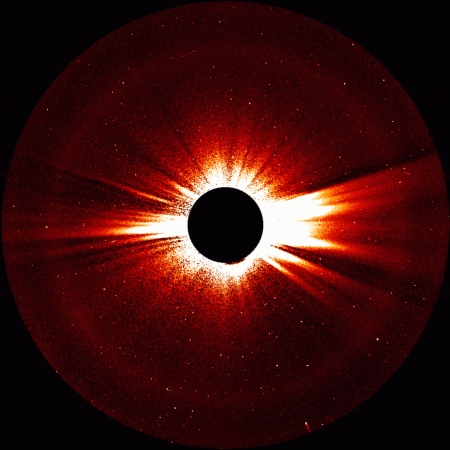
Researchers from NASA and ESA spotted the return of a comet dubbed 96P by using the Solar and Heliospheric Observatory (SOHO).
ALSO READ: Gas giant planets like Jupiter may have started as 'Steam worlds'
Here are the top things you need to know:
1. Comet 96P is also known as comet Machholz, as it was discovered by an amateur astronomer Dan Machholz's in 1986. It passed by earth on October 25 and entered the lower right corner of SOHO and skirted up and around the right edge before leaving on October 30.

2. This is not the first time that the comet was spotted by SOHO; it was also seen by the observatory in 1996, 2002, 2007 and 2012.
3. NASA's STEREO (Solar and Terrestrial Relations Observatory) also observed comet 96P, which had a track opposite earth's orbit between October 26 to 28 .
ALSO READ: Giant void discovered in the Khufu's Great Pyramid in Giza with the help of cosmic rays
4. It's very rare to observe comets from two different spots in space, so far these have been the most in-depth observations of comet 96P.

5. The latest findings of the comet accumulated by SOHO and STEREO so far will aid in exploring more about the composition of the comet and also help in digging out more about the constant flow of charged particles from the sun, as well as its interaction with the solar wind.
6. Polarisation measurements of the comet were collected by both the missions. This data helped astronomers in finding out about the composition of the comet.
ALSO READ: Long-term space mission impacts the brains of astronauts severely
"Polarisation is a strong function of the viewing geometry, and getting multiple measurements at the same time could potentially give useful information about the composition and size distribution of the tail particles," said William Thompson, STEREO chief observer at NASA's Goddard Space Flight Center in the US.
7. The comet completes an orbit around the sun every 5.24 years, with 17 million kilometres being its closest approach to the sun which is an extremely close distance for a comet.
ALSO READ: Vietnamese woman swallows whole condom to hide evidence and escape arrest; lands in hospital
8. When comet 96P appeared in SOHO's view in 2012, amateur astronomers analysing SOHO's data spotted two tiny comet fragments a bit ahead of the main body of the comet which pointed towards 96P actively changing. A third fragment had also being spotted by the astronomers which signifies that the comet is still evolving.
9. Astronomers were enthralled by the unusual composition of comet 96P, which is the parent of a group of comets that share a common orbit that originate from a much larger parent comet which broke into smaller pieces over millennia.
ALSO READ:Guys! You could be at a greater risk of cancer because of THIS!
10. Comet 96P is the found to be the parent of two separate comet groups, which were found by citizen scientists analysing the data collected by SOHO, along with numerous earth-crossing meteor streams. Examining the continuous evolution of the comet, researchers can find out more about its origins of its complex family and nature.

















